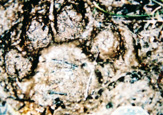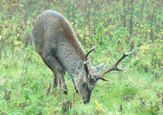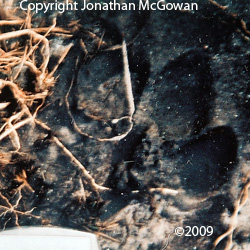





Big Cats in Britain - Page 2 of 4
Cats are known for their escaping abilities, and the large species are particularly strong. Many a leopard or jaguar have escaped from strong steel cage traps, even if it meant losing its valuable teeth in the process. Many wild cat trappers in the animals native land have been amazed by the cats ability, not just to escape capture but escape being seen These attributes along with many more make up part of the picture.
There are two species of large cat that are the most successful of all; the leopard (panthera pardus) and the puma (felis concolor). The common leopard is the most largely distributed cat in the world. The only places it hasn't existed in modem times is Australasia, including New Guinea and many of the south sea islands and Madagascar It did once occur right across the northern hemisphere including the British isles up until the end of the last ice age (possibly) although it is not impossible that it lived on after the separation from the continent.
It is very unlikely though, as the supposed leopards seen and photographed today in Britain more closely resemble the African or Asian type animals. It is of these types that collectors usually had. We must bear in mind that there are many subspecies of leopard and a few have evolved into separate species. Adapting to various extremes in temperature and habitat, they have short or long fur, thick or slim tails and varying sized ears and of course pelage colour. It would mean that the British Isles would have to have a unique variety of leopard suited to our climate, wildlife and habitat. There has been no proof of any, but that doesn't mean that there isn't one. Basically the leopard is an extremely adaptable animal, and the varying types of habitat it lives in is proof of that. The animal may do best in temperate climates rather than hot tropical ones within its distribution map.
It is more likely to be found in the cooler regions of that area, but not cold. Although the animal can be found at high altitudes, that is where the diverged subspecies, or species have evolved to take over. So could the archetypal leopard survive in Britain? The answer is a big yes. There are many reasons for this. Firstly lets look at the second most successful cat. Puma, Mountain lion, Cougar (felis concolor) is distributed across the whole of the North and South American continents. Again there are many races or subspecies. It is very adaptable just like the leopard and like it, can conquer any environment with the exception of very and desert. In fact the puma fare's better in cool climates.
Both species are opportunistic hunters and can feed on any kind of animals. Both species, like most cats possess a very quick thinking and witty mind, enabling them to keep out of sight and hunt by stealth. They are calm and collective and use their environment to their own advantage. They have control of movement and with fantastic eyesight and hearing fool us humans into thinking that they are supernatural or even that they do not exist at all. The Native Americans called the puma the ghost cat because even though they lived with it, they rarely saw it. And indeed those who work with cats, biologists for example may never see the animal in which they have been tracking for years. Yet, in the United Kingdom thousands of people see them every year, this says a lot.
We have lots of different species of none indigenous animals, birds, reptiles, amphibians fish and insects along with many other types of invertebrates. This is not surprising, as we live in a culture of pet keeping, horticulture and gardening, fishing, farming and food production. These are the main reasons for none native species to be here in Britain. Add the zoos and wildlife parks and private collectors, pet traders, and there you have it.
Page 1 | Page 2 | Page 3 | Page 4

Big puma